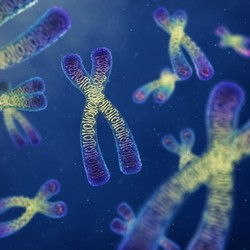Mechanisms of chromosome repair and replication
Earlier studies suggested that chromosome segregation and repair are directly linked through two evolutionarily conserved protein complexes — cohesin and the Smc5/6. The goal of the EU-funded GENOMIC STABILITY (Genomic stability - chromosome segregation and repair) project was further investigation of the link between molecular mechanisms of genome stability and dynamics. During chromosome duplication, the parental DNA molecule becomes positively supercoiled in the region ahead of the advancing replication fork. The resulting superhelical tension (ST) is removed by topoisomerases, which introduce transient DNA breaks. Supercoiling can also be diminished if the advancing fork rotates along the DNA helix. However, the details remain largely unknown for replication-induced ST relief in the linear eukaryotic chromosomes. Researchers showed that ST stress increases with the length of Saccharomyces cerevisiae yeast chromosomes. It means that ST has to be handled on a chromosome scale and not only within topologically closed chromosomal domains. Importantly, the Smc5/6 complex was found to bind to chromosomes during DNA replication in a chromosome length-dependent manner. It was also required for the resolution of replication-induced ST in the DNA molecule. If the ST is not removed, it will lead to replication fork blockage and this increases the risk of genomic rearrangements. The project results allowed a model where Smc5/6 removes ST by sequestration of sister chromatid intertwinings. It also indicated that topological tension increases with the size of yeast chromosomes, and that this is the reason behind the length-dependent binding pattern of Smc5/6. The association of Smc5/6 with the chromosome was under the control of the cohesin complex, which tethers sister chromatids until the moment of cell division. Taken together, the data suggests that the interplay between ST, Smc5/6 complex and cohesin complex controls the stability of the chromosome structure and their correct segregation during cell division. This indicates that the phenomenon of DNA supercoiling is not an obstacle, but an essential part of the chromosome segregation machinery. This finding is of great significance in the design of cancer therapy drugs.







